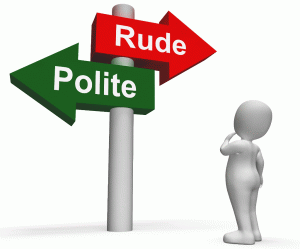 Very few writers realize that there are four different types of email, and that it’s important to determine which type you will be writing before you begin. Each will be somewhat different from the other three.
Very few writers realize that there are four different types of email, and that it’s important to determine which type you will be writing before you begin. Each will be somewhat different from the other three.
The four types of emails are (1) the “original” email, which should be no longer than a single screen to a screen and a half at the very most; (2) the response to the original email, no more than a screen; (3) an attachment, usually a much longer piece; and (4) the cover letter for the attachment, usually a screen or less. Frequently a who-what-when-where-why-how paragraph, no more than five lines, telling the reader what you are sending, will do it.
Shorter is better today, as long as you cover what needs to be said.
Important as the mechanics of writing are – and they absolutely are – that’s only the first half of what you must know to write effectively – to write for results.
The second part of writing for results is your strategy. So let’s pick up there from last week. For business writing, a well thought out strategy is crucial to getting the results your writing is meant to achieve.
Let’s take a longer look at the starting point for developing a solid strategy,
The Four Critical Questions:
- What is the piece I am writing?
Are you using an email when a USPS letter could be more effective? A phone call when a text might get you better, faster results? Are you trying to avoid the personal touch by using an impersonal medium rather than a personal contact? Is email the best way to communicate with your potential reader? It all depends on what you’re trying to achieve, and the best way to achieve that goal with this specific reader.
Achieve that goal? While it may seem incontrovertible that of course you want the reader to read what you have written, consider the possibility that your strategy might be better served if that piece is not read at all! I leave that one to you and your good judgment.
So question #1 to ask yourself: (a) Should I pass this particular piece of information along at all? (b) If so, should I pass it along in writing? By email? And then, if so, (c) Do I want the reader to read this piece, or not?
2. To whom?
So who is this prospective reader? Who should he or she or they be? Think about who your real reader is. Are you writing directly to the decision-maker? To the gatekeeper, the person who frequently decides whether or not the decision-maker will get the material you’ve sent? To the influential, the person who has the most “say” in what the decision-maker decides? To all of the above?
What do you know about the attention span of your potential reader(s)? Does this mean a “just the facts ma’am” communication, or does your potential reader want all the details. And how does he, she, or they want it presented? How long should your piece be if you want your readers to read it?
Question #2 to ask yourself: How will I need to adjust my writing – if it all – based on the answers to these questions?
3. Am I informing? Or persuading?
This decision is possibly the most critical of the four critical questions. Here’s where you break down writer’s block. Here’s where you tighten up your writing. Here’s where you cut to the chase, and quit rambling.
Let’s define “informing” in the context of this discussion. By “informing” I mean you are just providing information. You have no vested interest. What the reader does with the information is up to the reader.
“Persuading,” is a completely different matter. You do have a vested interest. You do care what the reader does with the information you provide.
Think about each of these two pieces:
(1) I am going to write a one-page email to Joe Jones informing him of the changes to our XYZ process (information side).
(2) I am going to write a one-page email to Joe Jones persuading him to implement the new changes to our XYZ process (persuasion side).
How will they differ? How will you write each?
4. Of What? To do what?
Focus in. (1) On the information side, what are you informing your reader about? (2) On the persuasion side, what do you want your reader to do? These are really the key questions which, if left unanswered, will keep your thought process in a muddle.
Once you can clarify your answers, a remarkable thing happens: The piece almost writes itself!
Now you’re ready to consider the results this piece needs to achieve; the tone you will use to get those results; and the content you will include, based on the reader’s need and use for this information, and your purpose for writing it.
Gail Tycer offers business writing workshops and presentations; executive coaching, consulting, writing, and editing services. Call Gail at 503/292-9681, or email gail@gailtycer.com to learn more.
If this blog post would be useful to your team, please forward it, or drop us an email, and we’ll send them next week’s post for you automatically.
We appreciate your inquiries and referrals.







